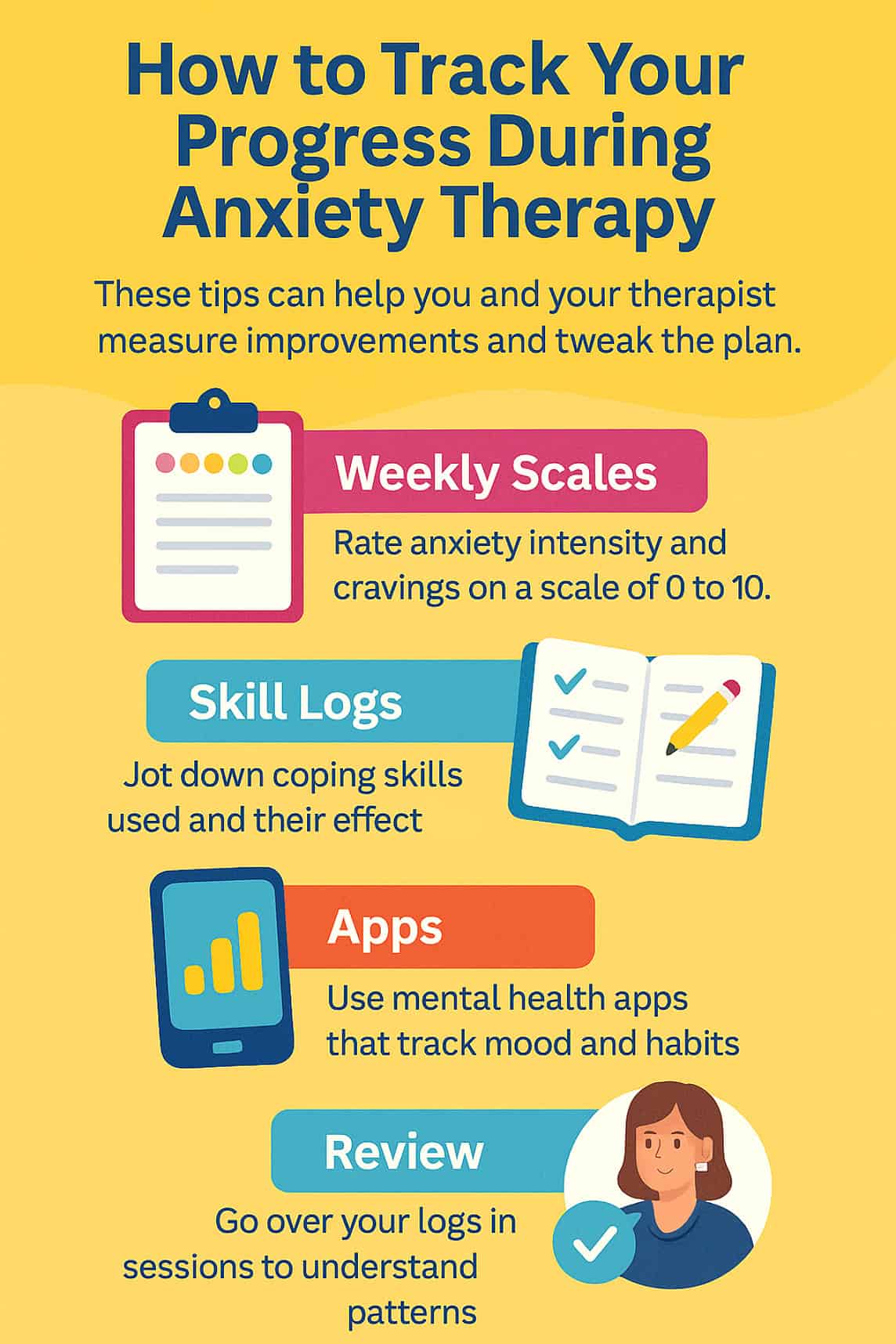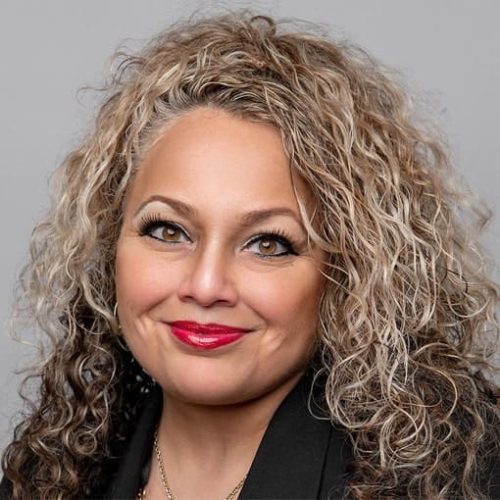
Key Takeaways for Keeping Track of Progress During Anxiety Therapy.
- Use weekly anxiety rating scales (like 0–10) to measure intensity and patterns over time
- Log cravings, mood shifts, and sleep quality to identify hidden triggers
- Write down when you practise skills like grounding or breathing and note the results
- Review your notes with your therapist every few sessions to fine-tune your plan
- Try digital tracking apps if journalling feels overwhelming or time-consuming
- Celebrate small wins to stay encouraged and notice how far you have come
🎯 Keeping track doesn’t have to be hard. It just has to be consistent and meaningful to you.
👉 Ready to take the next step? Learn more about anxiety therapy at AERCS and how to book your free 15-minute phone consultation.

The easiest way to monitor your progress during anxiety therapy is to log weekly anxiety ratings and cravings, note when and how you practice coping skills, and review those notes with your therapist every few sessions so the plan can be tweaked in real time. A simple, consistent tracking system turns vague impressions into clear data that guides faster, steadier improvement.
Why Tracking Matters to Your Recovery.
Data Beats Guesswork.
When you rate anxiety on a 0–10 scale, you capture subtle shifts you might miss day to day. That clarity helps you and your therapist see what works and where to pivot.
Stronger Addiction Interventions.
Tracking cravings alongside anxiety shows direct links between stress spikes and urges to self-medicate, giving you an early warning system.
Motivation Boost.
Seeing numbers drop or skill usage rise feels rewarding, which reinforces regular practice.
Step 1: Choose a Weekly Rating Scale.
| Scale Type | How It Works | Quick Tip |
|---|---|---|
| Numeric 0–10 | Mark highest and average anxiety each day | Note morning vs evening differences |
| GAD-7 or BAI | Standard questionnaires every two weeks | Store results in one document |
| Craving Scale 0–5 | Rate intensity of urges for substances | Pair with anxiety ratings for patterns |
Write scores in a journal, spreadsheet, or phone app at the same time each day for consistency.
Step 2: Log Skill Usage and Outcomes.
- Skill Used – grounding, thought record, breathing.
- Trigger Situation – work email, crowded train, family meal.
- Outcome – anxiety dropped from 7 to 4, craving eased.
Example: Monday, 2 p.m., tight chest after client call, 4-7-8 breathing for two minutes, anxiety 6→3, no craving.
Logging this detail helps your therapist fine-tune which techniques suit you best.
Step 3: Review Logs With Your Therapist.
Every Three to Four Sessions.
- Spot Trends – Are Sunday evenings always high?
- Measure Gains – Did average anxiety fall from 7 to 5?
- Adjust Strategy – Swap out skills that do not help or add exposure practice.
Quick Meeting Agenda.
- Five-minute review of scores.
- Ten-minute discussion of patterns.
- Plan updated homework.
Regular reviews keep therapy targeted and efficient.
Step 4: Flag Setbacks Early.
- Sudden Score Spike – If anxiety jumps two points for three days, note it.
- Missed Homework – Record why, such as travel or illness.
- Increased Cravings – Mark times when urges return, even if you resist.
Bring these flags to your next session so you and your therapist can troubleshoot before small issues snowball.
Step 5: Use Tech Tools for Convenience.
- Apps like Daylio, Moodpath, or a simple spreadsheet.
- Phone Reminders at set times to enter ratings.
- Secure Cloud Storage for sharing logs with your therapist between visits.
Tech removes the guesswork of remembering to write things down.
Tracking Your Progress.
Tracking your progress during anxiety therapy is as easy as rating anxiety and cravings, logging skill practice, and sharing those notes with your therapist. Clear data fuels smarter adjustments, faster relief, and stronger relapse prevention.
Ready to put these tips into action? Visit our Anxiety Therapy page and book your complimentary 15-minute phone consultation. Let’s track your way to calmer days together.
How often should I rate my anxiety to track progress during anxiety therapy?
Daily ratings capture trends, then summarize them weekly for review.
What is the best app for monitoring progress during anxiety therapy?
Any mood tracker that stores 0–10 scores and notes skill use works well for progress during anxiety therapy.
Do I need a formal questionnaire to see progress during anxiety therapy?
Standard tools like GAD-7 help, but a simple daily numeric scale also shows progress during anxiety therapy.
How long before I notice progress during anxiety therapy in my logs?
Many people see shifts in two to four weeks once they log consistently and practise skills.
What if my progress during anxiety therapy stalls or reverses?
Bring your logs to your therapist, identify new triggers, and adjust the plan to restart progress during anxiety therapy.
Do You Need Anxiety Therapy?
Take this quick self-assessment to see if anxiety therapy could help you manage symptoms.Note: This questionnaire is educational only and does not replace a clinical assessment. If you wish to obtain professional guidance, please follow up with a licensed mental health professional.

